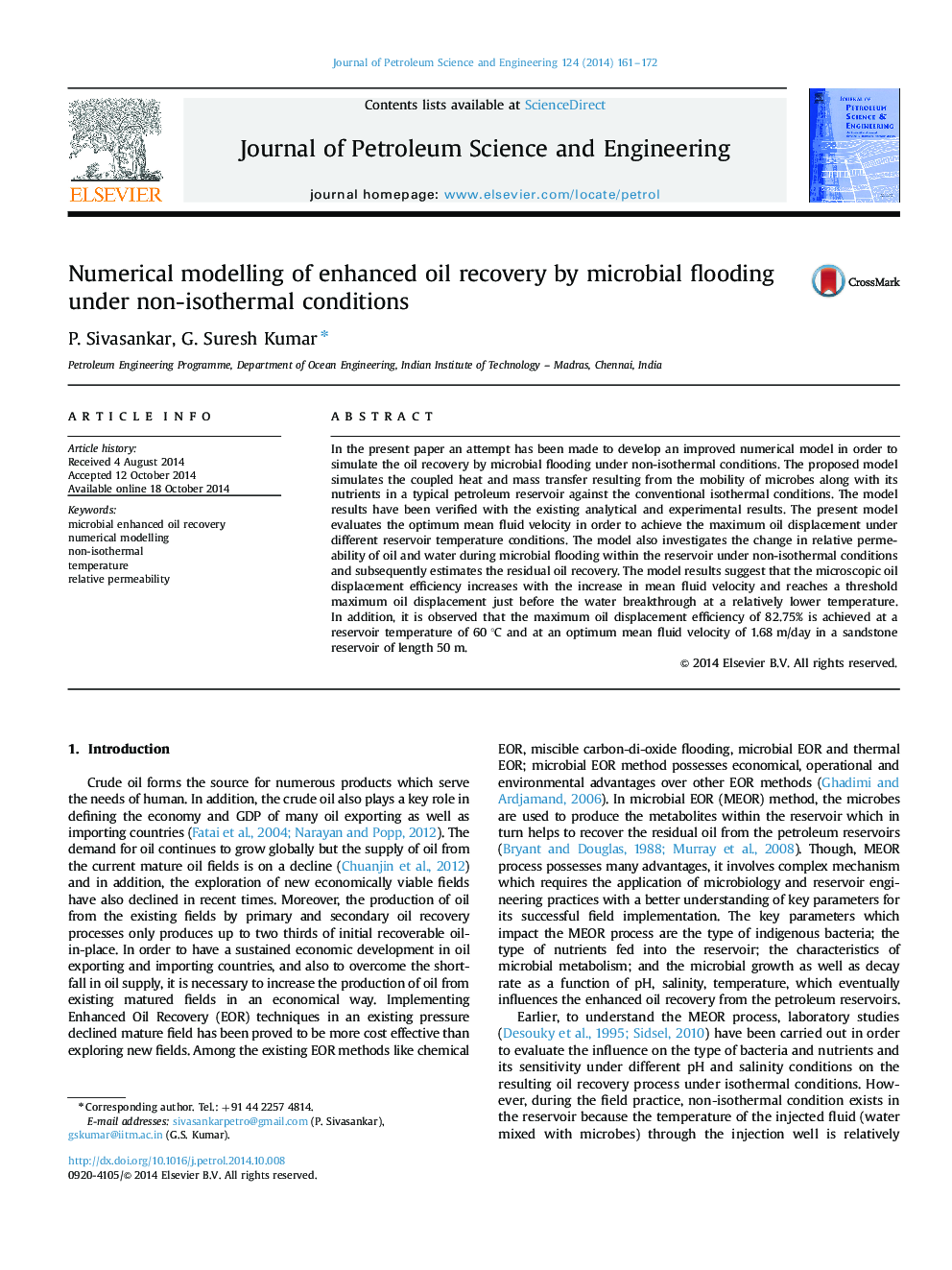| Article ID | Journal | Published Year | Pages | File Type |
|---|---|---|---|---|
| 1754940 | Journal of Petroleum Science and Engineering | 2014 | 12 Pages |
•Developed a numerical model to evaluate MEOR process under non-isothermal conditions.•Heat distribution in reservoir impacts microbial growth, viscosity of water and oil.•Transport of nutrients and microbes within reservoir is coupled with Monod kinetics.•Studied the impact of reservoir temperature and mean fluid velocity on Krw, Kro.•Evaluated oil displacement efficiency of MEOR under different reservoir conditions.
In the present paper an attempt has been made to develop an improved numerical model in order to simulate the oil recovery by microbial flooding under non-isothermal conditions. The proposed model simulates the coupled heat and mass transfer resulting from the mobility of microbes along with its nutrients in a typical petroleum reservoir against the conventional isothermal conditions. The model results have been verified with the existing analytical and experimental results. The present model evaluates the optimum mean fluid velocity in order to achieve the maximum oil displacement under different reservoir temperature conditions. The model also investigates the change in relative permeability of oil and water during microbial flooding within the reservoir under non-isothermal conditions and subsequently estimates the residual oil recovery. The model results suggest that the microscopic oil displacement efficiency increases with the increase in mean fluid velocity and reaches a threshold maximum oil displacement just before the water breakthrough at a relatively lower temperature. In addition, it is observed that the maximum oil displacement efficiency of 82.75% is achieved at a reservoir temperature of 60 °C and at an optimum mean fluid velocity of 1.68 m/day in a sandstone reservoir of length 50 m.
